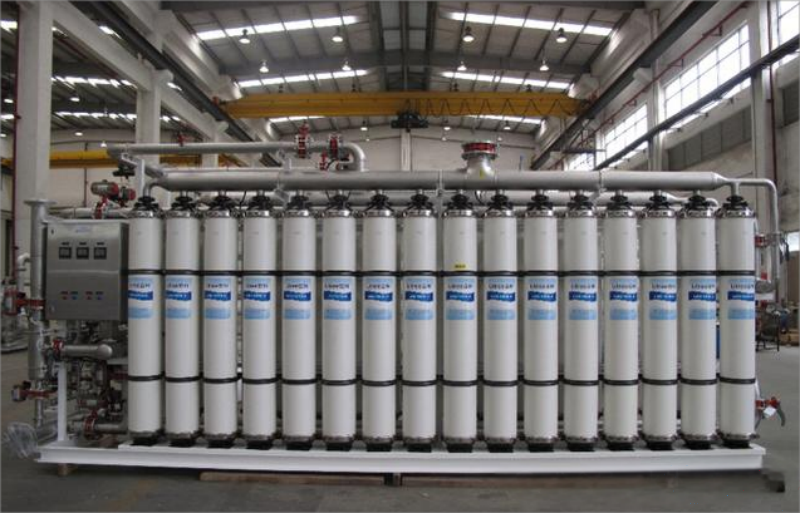Marketing Hotline:
(+86)0532-88988868
(+86)0532-88988868
Ultrafiltration membranes have a strong filtration and purification effect, and are mainly used to intercept harmful substances in the water while keeping the pH value of the permeate unchanged. Ultrafiltration can effectively remove large proteins and bacteria-like substances, if you want to remove calcium and magnesium ions, it is recommended to use nanofiltration membranes or reverse osmosis membranes.
In membrane treatment, it can generally be divided into ultrafiltration, nanofiltration and reverse osmosis. The ultrafiltration membrane you are referring to generally has a pore size of 0.1-0.01um, and the molecular weight of the retained membrane is between 1000-300,000. The diameter and molecular weight of calcium and magnesium ions are much smaller than this value. Therefore, it is permeable to ultrafiltration membranes.

1. The concept of ultrafiltration
The process of using ultrafiltration membranes with pore sizes of 1.0~20.0nm or larger to filter solutions containing macromolecules or fine particles, and separating macromolecules or fine particles from the solution is called ultrafiltration.
2. Characteristics of ultrafiltration
Similar to reverse osmosis, the driving force of ultrafiltration is also the differential pressure, which is pressurized on the solution side to allow the solvent to pass through the membrane and separate. Unlike reverse osmosis, in the ultrafiltration process, small molecule solutes are passed through the ultrafiltration membrane along with the solvent.
3. The essence of ultrafiltration
The essence of ultrafiltration is sieving, the adsorption and clogging of particles in the micropores on the membrane surface. Ultrafiltration membrane is an asymmetrical membrane, and its surface active layer has micropores with a pore size of 10-9 ~2×10-8m, which can intercept macromolecules and colloidal particles with a relative molecular weight of more than 500, and the pressure difference used is 0.1~0.5MPa. However, ultrafiltration reverse osmosis membranes can remove the scaling cores such as colloids in the water, which can reduce the degree of scaling to a certain extent.
4. Advantages of ultrafiltration membranes
Due to the serious pollution of water source and secondary pollution, it is difficult to achieve the deep purification effect of drinking water with ordinary filter media. The ultrafiltration membrane purification technology adopts the principle of high-precision pure physical filtration, does not add any chemicals, and relies on the dense micropores on the surface of the ultrafiltration membrane for screening, so as to intercept harmful substances, so as to achieve the effect of filtration, purification and purification.
Through various reasons, the development of membrane making technology and the scale of production make the performance of ultrafiltration membrane more stable. However, ultrafiltration membranes are not the mainstream technology for removing calcium and magnesium ions from water.


